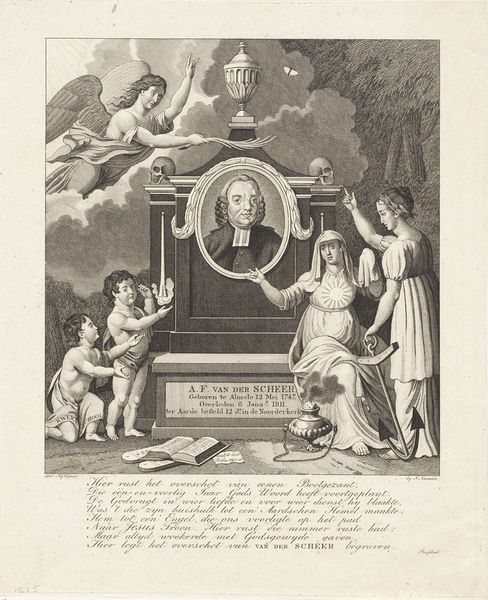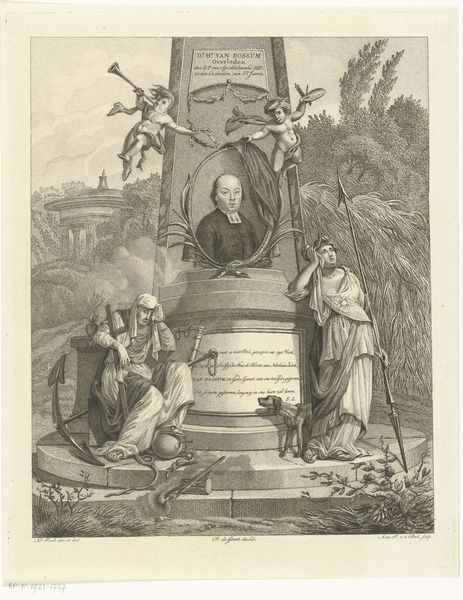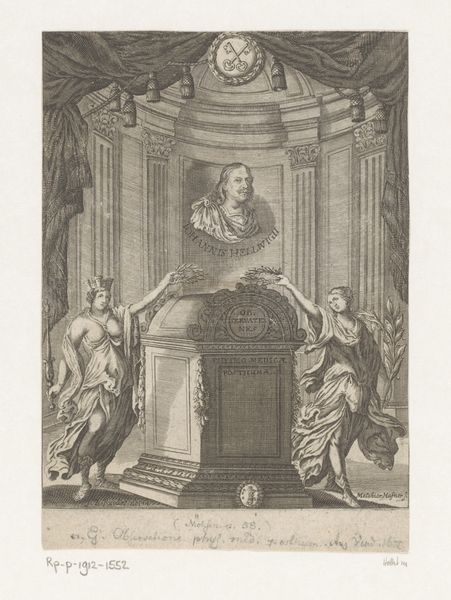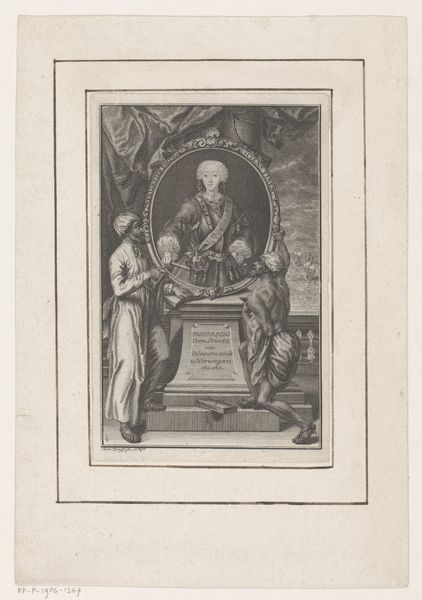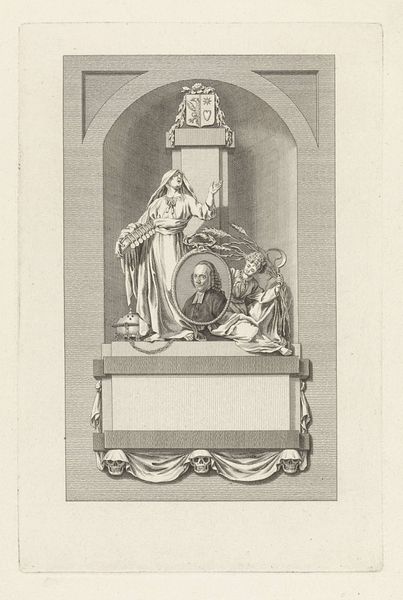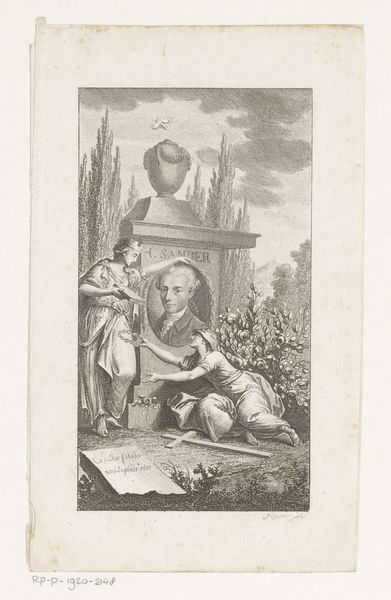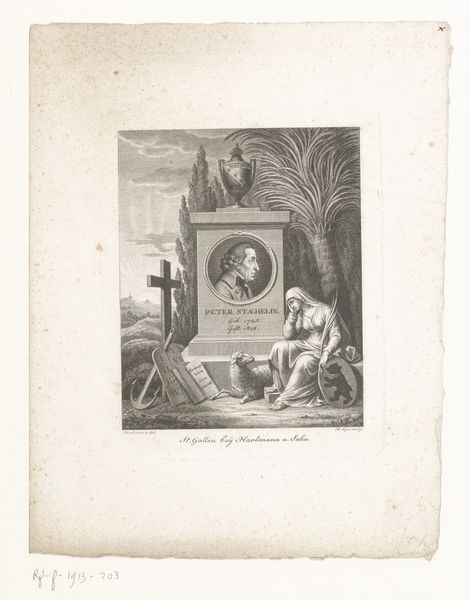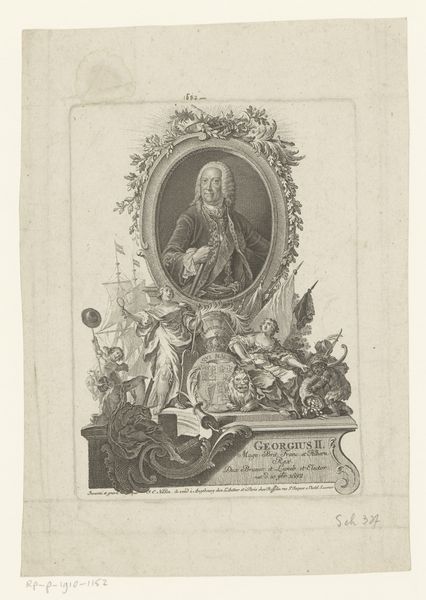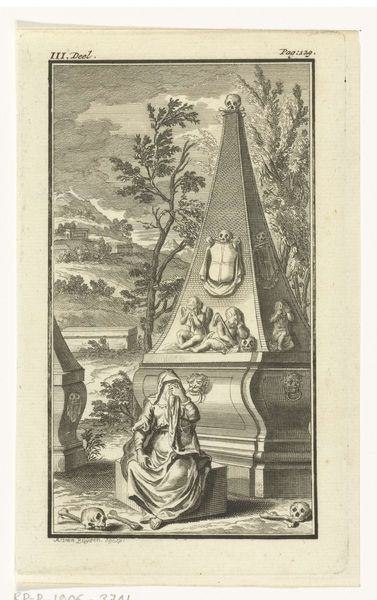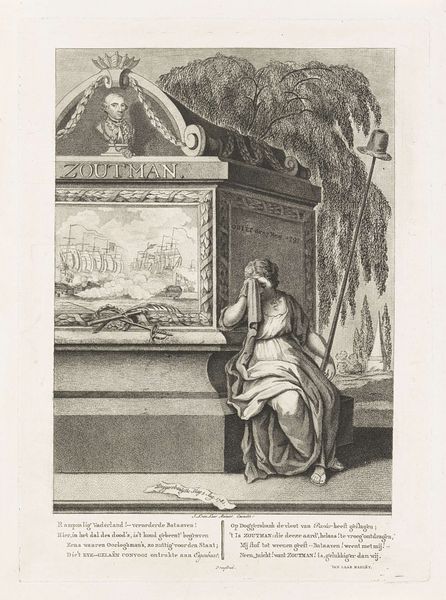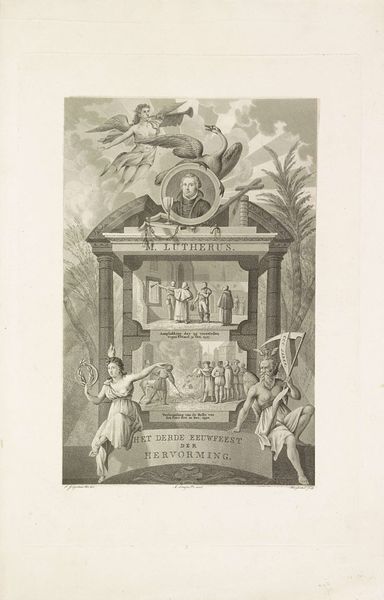
engraving
#
portrait
#
caricature
#
old engraving style
#
caricature
#
portrait drawing
#
history-painting
#
engraving
Dimensions: height 351 mm, width 238 mm
Copyright: Rijks Museum: Open Domain
Curator: This engraving, created after 1805 by Noach van der (II) Meer, is entitled "Gedenkteken voor Henricus van Herwerden," which translates to "Memorial for Henricus van Herwerden." It's currently housed here at the Rijksmuseum. What’s your immediate reaction? Editor: Somber, wouldn't you agree? There’s such an intense, symbolic presentation. The weeping figure, the skull and bones, even the memorial itself – it all suggests profound mourning, almost operatic in its grief. Curator: That's astute. Van Herwerden was a Dutch theologian. Commemorative prints like these served a very important socio-political function back then. Think of them as public pronouncements of grief but also of values. How a person was memorialized communicated how society saw them. Editor: Absolutely. Look at the central portrait. Encased in the memorial structure with cherubs around him, that places the man himself front and center in the imagery. The weeping figure to the left—a personification of sorrow, no doubt, given the stylized robes. Curator: Exactly, and she points us to the memorial, doesn't she? Consider also the book and the extinguished lamp on the pedestal— symbols of knowledge and the end of life’s light. These symbols would have been instantly recognizable. This engraving reflects the era’s culture of public mourning and moralizing through imagery. The inclusion of academic texts at the base highlights Van Herwerden’s professional life. Editor: It is an interesting display, but it leaves you with questions. The trees that form the backdrops suggest the passage of time but also longevity in legacy. Is this to suggest life, death, and beyond through the presence of the clouds bursting with light above? Curator: Yes. Ultimately it presents van Herwerden not just as a man who died, but as a figure whose legacy persists beyond mortality. And these prints, being relatively accessible, helped to reinforce this perception broadly. Editor: Considering all those layers of visual messaging, it’s clear that it did more than simply communicate information about a person, it invited reflection about mortality and memory itself. Curator: Indeed. A potent blend of art, commemoration, and social communication, even to this day.
Comments
No comments
Be the first to comment and join the conversation on the ultimate creative platform.
